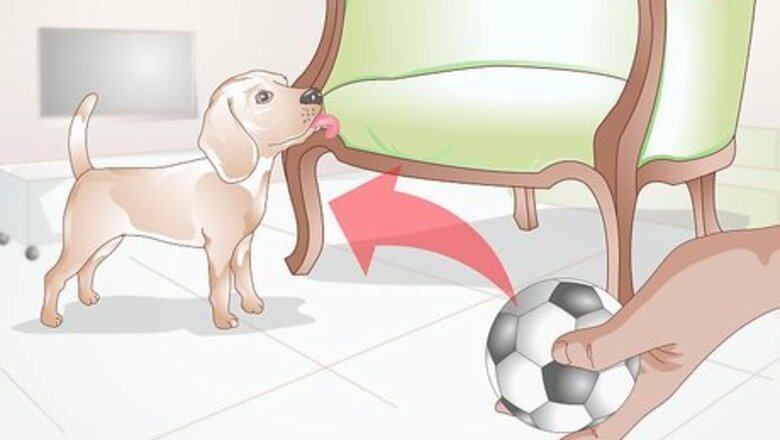
views
Distracting Your Dog from Licking
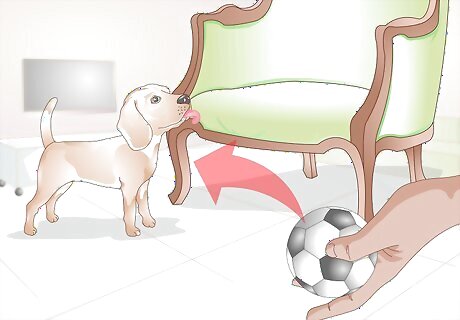
Toss a ball or a toy. When you see your dog licking or sucking fabric, take their favorite toy and throw it. Instead of licking the furniture, they will start to play. If you do this often, they will start using their toys to get their licking urges out instead of the furniture.
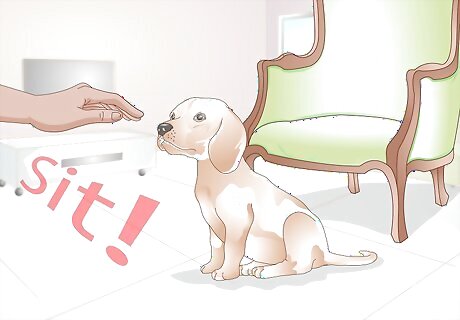
Give your dog a command. It's a little hard to keep licking when you're supposed to do something your master or mistress commands. Telling your dog to "Sit!" or "Lie down!" will stop them momentarily.
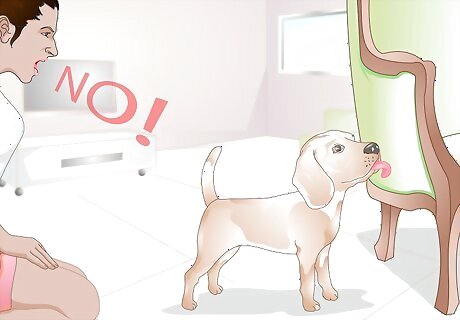
Interrupt your dog. Every time you catch them licking, clap and say "No!" very authoritatively. Don't be inconsistent - every single time you catch them, you must respond this way so that they come to associate the licking with an unpleasant noise and your disapproval.

Move the dog away from the spot. If you have a small dog or a puppy, you can pick them up and take them to a different room. This is especially effective if they seem to be licking the same spot over and over again. This will reinforce that they should not be licking at that spot.

Pull away if your dog is licking you. Licking can be a social activity for dogs, which humans often reinforce with praise. Some people, however, may not find it so endearing. If you want to stop your dog from licking you or other people, you will have to show them that licking is not an acceptable behavior. Every time they lick you, step away. If you are sitting, stand up and leave the room for a minute. After a while, they will learn that licking will not earn them attention.
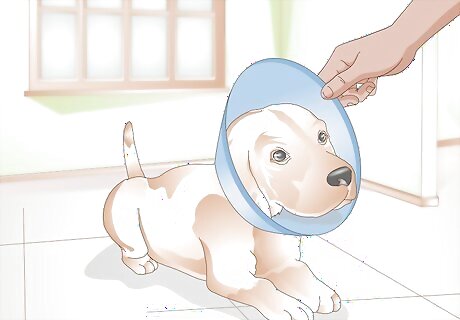
Purchase an Elizabethan collar. If your dog had surgery, you will need to stop them from licking or chewing their stitches. Elizabethan collars are the plastic cones that dogs wear after surgery. If your dog’s licking is caused by a medical procedure, have them wear the cone until they are fully healed. Do not make your dog wear the cone to prevent general licking unless directed to do so by a vet. Dogs find the cone uncomfortable. Only use it for a short period of time.
Preventing Future Licking
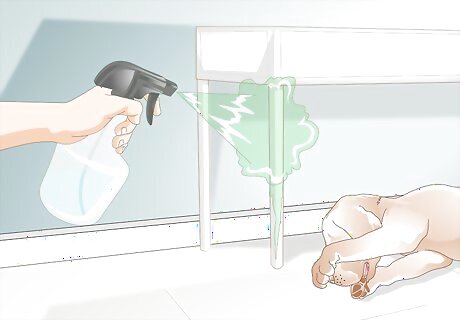
Spray furniture with a taste deterrent. Dogs won’t lick objects if they taste unpleasant to them. You can find a variety of sprays that will coat your furniture and rugs so that they give off a bad taste. Bitter apple spray is a common repellent. Test the spray on a small part of your fabric or wood furniture first to make sure that it won’t stain. You may need to reapply the deterrent every two to four weeks. When sitting down with your dog, you can put a small amount of hot sauce or lemon on your skin to deter them from licking you. Wash it off immediately afterwards.
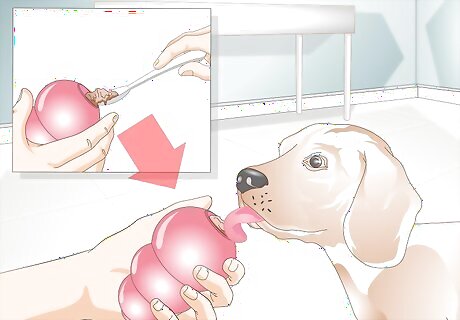
Give the dog a toy when they are more likely to lick. If you notice that your dog is licking at certain times of the day, it can be a signal for you to give them the simulation they need. For example, you may notice that your dog licks you when you sit down to watch TV at night. Whenever you sit down on the couch, give them a toy or bone that will distract them for that period of time. You can fill a Kong type toy with peanut butter or kibble.They will spend their time trying to lick the food out instead of licking the furniture. Another idea is to make some ice cubes flavored with chicken or beef broth. Your dog will suck on these until they melt.
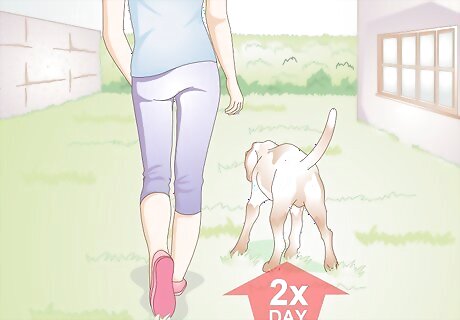
Give the dog plenty of exercise. Anxiety and obsessive behaviors can cause licking, especially if you notice the dog licking themselves. Even if you have a yard for them to run in, take them on walks at least once or twice a day. If you're gone for work during the day, try to come home during lunch, or ask a friend to walk the dog in the middle of the day. These can ease the underlying behaviors behind licking.
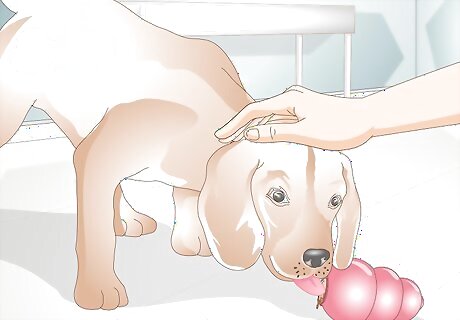
Praise your dog when they are licking an appropriate toy. If you catch them licking, distract them with a chew toy or ball. Once they have taken it into their mouth, praise them. Make sure that the toy is in their mouth or that they are licking the toy before you praise them. You are aiming to teach your dog to only lick certain objects. Punish only when you’ve caught them in the act. Dogs only understand that they are being corrected for behavior committed in the current moment.
Easing Their Anxiety
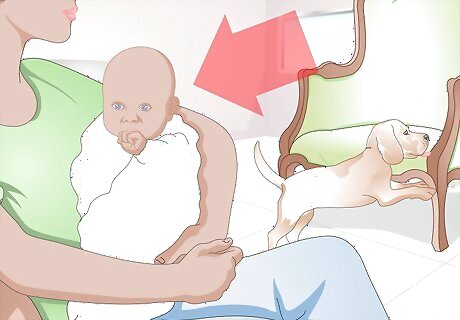
Note any changes in your living situation. Your dog may be licking to act out or because of stress caused by changes. Is there a new dog in the house, or even a new pet or baby? Is the dog not getting its usual amount of daily attention? It may be as simple as restoring a routine or spending more time with your dog. Give the dog extra attention until normalcy is restored.
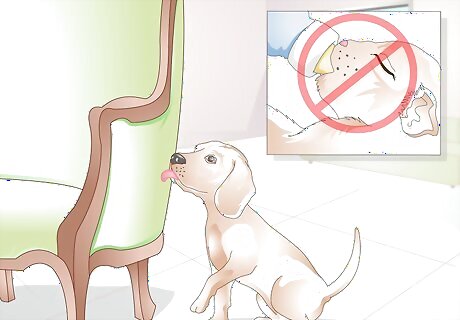
Determine if your dog was weaned too early. Sucking and licking blankets and furniture can be a sign that the dog was weaned too early. It is a common feature in bottle-raised puppies. Early intervention is necessary to prevent it from becoming a life-long habit. You can try: Giving the puppy a variety of other toys to chew and play with. Designating a blanket for them to suck on. Praise them when they use this blanket and only this blanket. Physically moving them away from the object.

Provide entertainment while you are away. If your pet is licking furniture while you are out, it could be separation anxiety. Leave a TV or radio on while you leave. Make sure they have plenty of toys to play with while you are gone. Before you leave, give them a toy filled with treats or peanut butter. They will spend time trying to lick out the peanut butter and may forget that you left them at all.
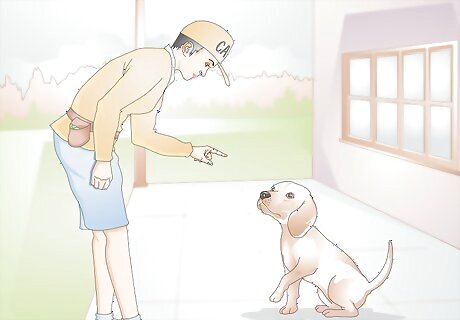
Hire a behaviorist. Compulsive behaviors can be difficult to break without the proper training. Try to find a Certified Applied Animal Behaviorist (CAAB), a board-certified veterinary behaviorist, or a Certified Professional Dog Trainer (CPDT). They will be able to find the root of your dog's behaviors while practicing safe methods to treat the habit.
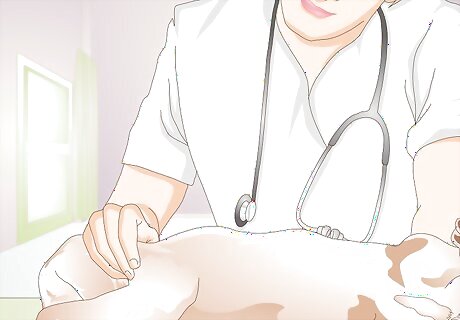
See your vet. If all else fails, talk to the expert. Your dog’s licking could be the result of allergies, fleas, or obsessive compulsive disorder. While it is possible to medicate a dog for such behavior, this should be treated as a last resort and it's much better to find some behavioral changing methods first.
Differentiating Normal from Problematic Licking
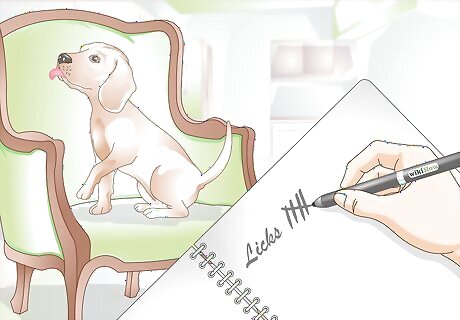
Note how often your dog licks. Dogs often mouth, lick, or suck things to feel their way around the world. Licking themselves or various objects around the house a few times a day is normal. Excessive licking, however, may be a compulsion. If they are sitting at the same spot for long periods of time or if you cannot distract them from their licking, they may have a compulsive disorder.
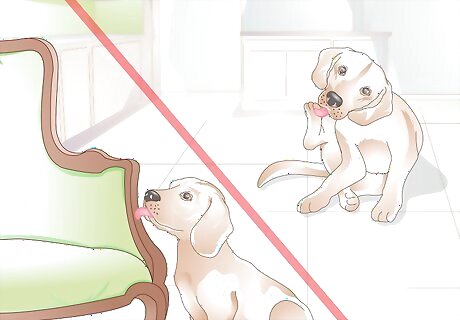
Pay attention to where they lick. Where the dog licks is an important clue to what is causing their problem. Watch to see if they are licking themselves or furniture. Licking or sucking blankets or bedding may be a result of early weaning. Furniture licking may be a sign of stress, anxiety, or compulsive behavior. Your dog may not have enough stimulation, or they may have other behavioral issues. Licking their anal area could mean that your dog has allergies or a problem with their anal glands. Licking their feet or legs until they lose hair may be Acral Lick Dermatitis. Licking their genital area frequently is normal behavior. As it is harmless, you should not try to correct it.
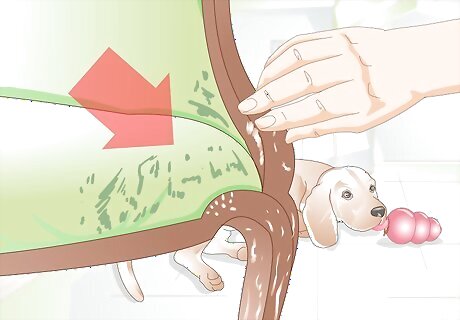
Identify damage done by licking. You may notice wet spots on your furniture or places where the fabric has worn thin because of excessive licking. Wood varnish may have disappeared, or there may be faint teeth marks on a chair leg. Before you take action, try to catch your dog in the act. Determine if the dog was really causing the damage before you try to correct the behavior.










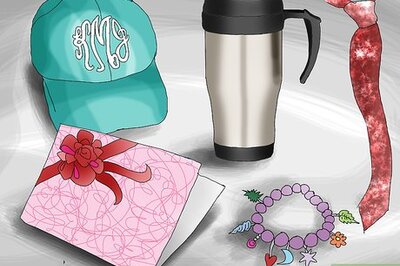






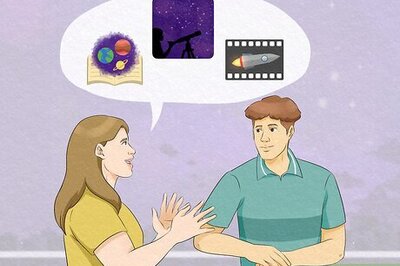

Comments
0 comment